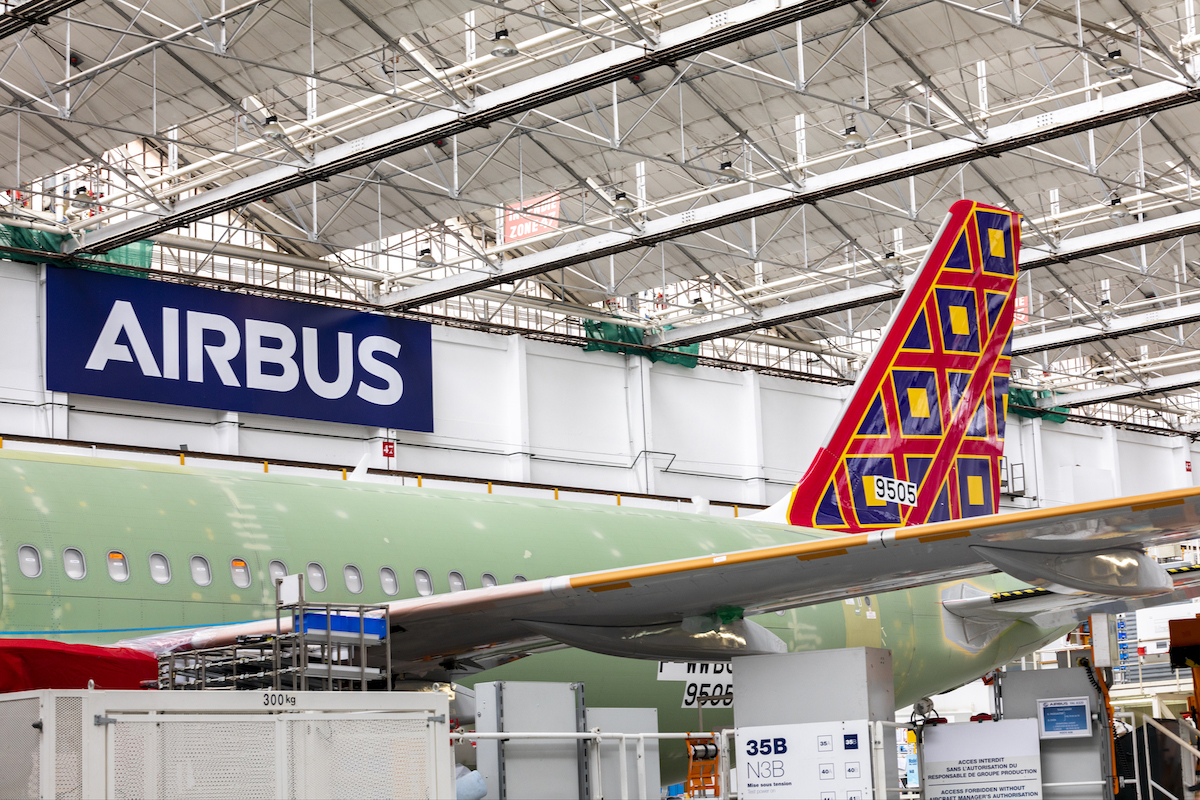Airbus, Boeing Production Delays Will Hold Back Airline Growth in 2023

Photo Credit: Airbus
The aircraft production issues that Airbus and Boeing have faced through the pandemic recovery are not getting any worse. But they are also not yet getting better, which has forced airlines to accept that the industry's recovery and growth will remain constrained for at least another year.
Delivery delays for new Airbus A220 and A320 family aircraft, and Boeing 737 Maxes are "certainly worse than three months, and it's not getting any better," Air Lease Corp. Executive Chairman Steven Udvar-Hazy said during the lessor's fourth-quarter earnings call Thursday.
And it was not only Udvar-Hazy indicating the situation is not improving. Airbus CEO Guillaume Faury, speaking during the Toulouse-based airframer's own earnings call on Thursday, said supply chain issues had "stopped degrading" but were not yet getting better. This prompted Airbus' target of just 720 commercial aircraft deliveries in 2023, essentially equal to the goal set for last year of just over 700 deliveries. The planemaker delivered only 661 planes in 2022.
Airlines are feeling a very real pinch from these delays. United Airlines disclosed Thursday that, of 147 new A321neos and 737 Maxes due this year, an estimated 51 aircraft will not arrive until at least 2024. As a result, the Chicago-based carrier has "delayed a portion of our previously planned capacity increases for full year 2023" due to the aircraft delays, as well as other macro uncertainties. United plans to grow capacity in the "high teens" compared to 2022 this year.
Southwest Airlines anticipates around 36 of the 136 737 Maxes it is due to take this year will slide into 2024, and Norwegian Air has said 10 of its 737 Max deliveries are delayed until next year. And Alaska Airlines and Delta Air Lines have both said that Airbus and Boeing have notified them of likely delays to their aircraft deliveries in 2023.
Just how much airline capacity will not fly this year due to the delivery delays is unclear. The industry faces numerous other constraints on its growth, including staffing issues — both a lack of staff and new staff that are less productive than before the pandemic — air traffic control constraints and infrastructure limits. But there is widespread agreement that limited availability of new aircraft will have an impact.
"Supply chain constraints in our industry ... will limit the addition of capacity in global aviation probably for years to come," Lufthansa Group CEO Carsten Spohr said in October. Lufthansa will temporarily bring back its superjumbo Airbus A380s this summer due to delays to new aircraft it has on order, including to the A350, 787, and 777X.
Even as Airbus and Boeing struggle to deliver aircraft, airlines are desperate for them. ALC CEO John Pleuger Thursday described the current market as a "high-demand environment" for new planes. The lessor has placed 90 percent of its new deliveries through 2024, and lease renewals remain at historic highs of around 90 percent. Airlines historically renewed leases on roughly 60 percent of aircraft.
This market has Airbus eager to build more planes where it can. The planemaker will increase production of its two widebody jets in coming years. The A330neo will go to four-aircraft per month next year, and the A350 to nine-aircraft a month in 2025 from six today. These bumps are in response to what Faury described as "growing demand for widebody aircraft."
Air India on Tuesday signed letters of intent for 470 Airbus and Boeing aircraft in the largest order in the airline's history. And, in December, United placed a mega order for up to 300 new 737 Maxes and 787s.
Where Airbus is struggling is with producing narrowbody planes. The airframer has delayed a planned production increase for its popular A320 family to 75 aircraft per month by a year to 2026. And engine supply issues continue to constrain deliveries of new A220 aircraft.
“We really believe that's feasible in the current environment," Faury said of the planemaker's production goal for this year and planned rate hikes.
Boeing said in January that 737 Max production rates had "stabilized" at 31 aircraft per month, and it targets 787 rates of five per month by the end of the year. The Arlington, Virginia-based planemaker plans to raise rates to 50 737s and 10 787s a month in 2025-26.
"We remain skeptical that Airbus and Boeing will meet their aspirational production rate goals over the next two to three years," Pleuger said.
